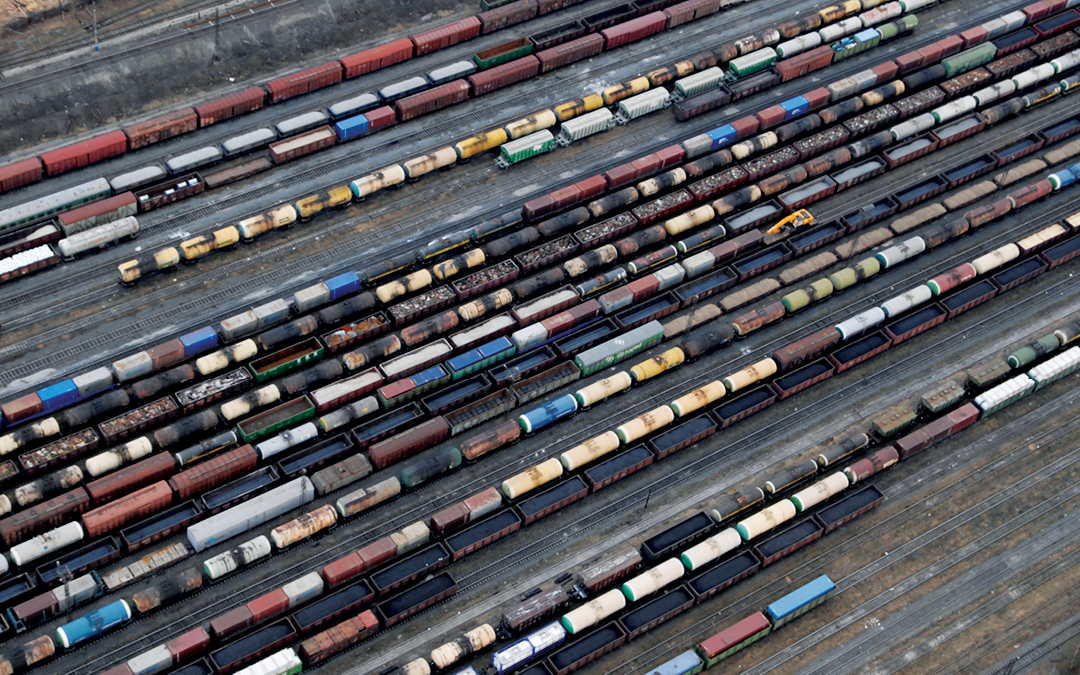The first hint of a potential rail strike sent U.S. Xpress teams into planning mode, mapping out how to support shippers and keep the supply chain on track.
What’s happening: With a massive rail strike looming, the whole country got a fast lesson in how much of our supply chain is tied to the tracks, but trucking companies and shippers already knew what was at stake.
Why it matters: Freight rail is pivotal to moving essential goods and services across the U.S. — from energy to power homes to the food in grocery stores. Much of the cargo that ends up on trucks travels by train to get there, and a strike could have cost the economy an estimated $2 billion a day.
The bottom line: Though the strike was averted just before it was scheduled to begin, working in contingency mode to prepare for it was a valuable reminder of the critical role trucks play in keeping the economy moving. Whether it’s a pandemic, a rail strike, or a hurricane, a strong contingency planning mindset is critical.
With a massive rail strike looming, the whole country got a fast lesson in how much of our supply chain is tied to the tracks, but trucking companies and shippers already knew what was at stake.
Freight rail is pivotal to moving essential goods and services across the U.S. — from energy to power homes to the food in grocery stores. Much of the cargo that ends up on trucks travels by train to get there, and a strike could have cost the economy an estimated $2 billion a day.
“Freight rail is a crucial part of an integrated network of trains, trucks and barges that ships around 61 tons of goods per American every year,” according to the website for the Association of American Railroads, an industry group.
Though the strike was averted just before it was scheduled to begin, working in contingency mode to prepare for it was a valuable reminder of the critical role trucks play in supplying homes and businesses across the country. Whether it’s a pandemic, a rail strike, or a hurricane, a strong contingency planning mindset is critical.
“This particular crisis didn’t materialize, and we’re glad for that, but we are always ready to do whatever it takes to support our customers no matter what curve balls come our way,” said Julie Van de Kamp, senior vice president of Customer Experience for U.S. Xpress.
When talk of a rail strike surfaced, supply chain experts estimated we’d need hundreds of thousands of additional trucks on the road every day to pick up the slack and keep goods moving — a staggering increase in demand.
“Idling all 7,000 long distance daily freight trains in the US would require more than 460,000 additional long-haul trucks every day, which is not possible based on equipment availability and an existing shortage of 80,000 drivers,” said Chris Spear, CEO of the American Trucking Associations in a letter to Congress.
At U.S. Xpress, the earliest hint of a potential rail strike sent teams into contingency mode, mapping out plans to support shippers and contacting customers to develop strategies for keeping their goods moving. Some customers got ahead of the potential strike and worked proactively with U.S. Xpress to divert shipments that would have gone from rail to truck directly to truckload.
“We knew a rail strike would put greater overall volume into the truckload market, similar to hurricane preparedness, so we worked closely with our customers on how to help,” Van de Kamp said. “We have a history of servicing crisis or project-related activities, so we’re well-positioned to be a resource for those customers affected.”
Teams got to work planning to move trucking resources toward impacted origin spots on the coasts, and positioning trailers to anticipate increased demand. Across the company, leadership pulled together resources to educate internal teams on the potential outcomes of the strike, and distributed information to drivers about how their work might shift if the strike occurred.
“We had regular cross-departmental meetings to ensure we were prepared across the board to support our customers and do everything we can to keep freight and our economy moving,” Van de Kamp said.





